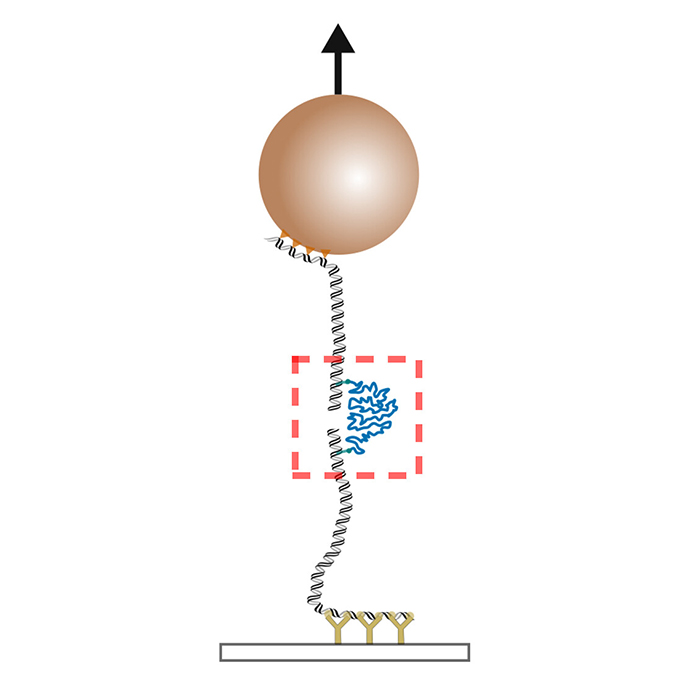New research article in PNAS for Nick Bell
In a newly published article in PNAS, Nick Bell and Justin Molloy (Francis Crick Institute) reveal fundamental mechanisms for how PARP [Poly(ADP-ribose) polymerase] proteins engage at DNA double-strand breaks, which may provide insights into PARP inhibitor development.
Abstract:
Poly(ADP-ribose) polymerases (PARPs) play key roles in DNA damage repair pathways in eukaryotic cells. Human PARPs 1 and 2 are catalytically activated by damage in the form of both double-strand and single-strand DNA breaks. Recent structural work indicates that PARP2 can also bridge two DNA double-strand breaks (DSBs), revealing a potential role in stabilizing broken DNA ends. In this paper, we have developed a magnetic tweezers–based assay in order to measure the mechanical stability and interaction kinetics of proteins bridging across the two ends of a DNA DSB. We find that PARP2 forms a remarkably stable mechanical link (rupture force ~85 pN) across blunt-end 5′-phosphorylated DSBs and restores torsional continuity allowing DNA supercoiling. We characterize the rupture force for different overhang types and show that PARP2 switches between bridging and end-binding modes depending on whether the break is blunt-ended or has a short 5′ or 3′ overhang. In contrast, PARP1 was not observed to form a bridging interaction across blunt or short overhang DSBs and competed away PARP2 bridge formation, indicating that it binds stably but without linking together the two broken DNA ends. Our work gives insights into the fundamental mechanisms of PARP1 and PARP2 interactions at double-strand DNA breaks and presents a unique experimental approach to studying DNA DSB repair pathways.
 Close
Close


